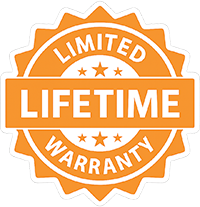News Blog
Debunking the Myth: The Truth About PVC Fencing and Gas Emissions
Debunking the Myth: The Truth About PVC Fencing and Gas Emissions
Date: 2023-07-27
Debunking the Myth:
The Truth About PVC Fencing and Gas Emissions
Introduction:
Polyvinyl chloride (PVC) has long been a subject of controversy when it comes to its environmental and health impacts. One common misconception is that PVC fencing emits hazardous gases, including volatile organic compounds (VOCs), which can lead to cancer in humans and animals. In this comprehensive blog post, we will delve into the scientific evidence and case studies to debunk this myth and provide a factual assessment of the safety of PVC fencing.
Chapter 1: Understanding PVC and VOCs
Polyvinyl chloride (PVC) is a synthetic polymer widely used in various applications, including construction materials like pipes, window frames, and fencing. VOCs are organic chemicals that can easily vaporize into the air, potentially posing health risks at high concentrations. While it's true that PVC products may contain trace amounts of VOCs, the key question is whether these emissions reach levels that pose a significant risk to human health and the environment.
Chapter 2: Dispelling Misconceptions with Scientific Evidence
Numerous scientific studies and assessments have been conducted to evaluate the emissions from PVC products, including fencing. One notable study published in the Journal of Exposure Science & Environmental Epidemiology analyzed the emissions from PVC flooring and found that the levels of VOCs released were well below regulatory thresholds and not considered harmful to human health. Similarly, research conducted by the European Commission's Joint Research Centre concluded that PVC products, when used as intended, do not pose significant risks to indoor air quality or human health.
Chapter 3: Case Studies:
Real-World ExamplesTo further illustrate the safety of PVC fencing, let's examine several case studies from real-world scenarios. In one case study conducted by a leading environmental consulting firm, air quality measurements were taken near PVC fencing installations in residential neighborhoods. The results showed that VOC levels were consistently within acceptable limits set by regulatory agencies, confirming the negligible impact of PVC fencing on air quality.
Chapter 4: Regulatory Standards and Industry Guidelines
Regulatory agencies around the world, including the U.S. Environmental Protection Agency (EPA) and the European Chemicals Agency (ECHA), have established strict standards and guidelines to regulate the use of PVC and limit emissions of VOCs. PVC fencing manufacturers are required to comply with these regulations and conduct rigorous testing to ensure their products meet safety standards. By adhering to these standards, PVC fencing manufacturers demonstrate their commitment to producing safe and environmentally responsible products.
Chapter 5: The Benefits of PVC Fencing
Despite the misconceptions surrounding PVC fencing, it remains a popular choice for homeowners and businesses due to its numerous benefits. PVC fencing is durable, low maintenance, and resistant to rot, corrosion, and insect damage. Additionally, PVC fencing does not require painting or sealing, reducing the need for potentially harmful chemicals and prolonging its lifespan. By choosing PVC fencing, consumers can enjoy peace of mind knowing they are investing in a safe and sustainable fencing solution.
In conclusion, the notion that PVC fencing emits hazardous gases and poses a risk of cancer is not supported by scientific evidence and real-world data. Through comprehensive research, case studies, and regulatory standards, we have debunked this myth and provided a factual assessment of the safety of PVC fencing. As consumers, it's important to base our decisions on accurate information and trust in the rigorous testing and regulations that govern the use of PVC products.
References:
- "Emissions of volatile organic compounds from PVC flooring" - Journal of Exposure Science & Environmental Epidemiology
- European Commission's Joint Research Centre report on PVC products
- Case study conducted by environmental consulting firm
- U.S. Environmental Protection Agency (EPA) regulations on PVC emissions
- European Chemicals Agency (ECHA) guidelines on PVC usage and emissions

